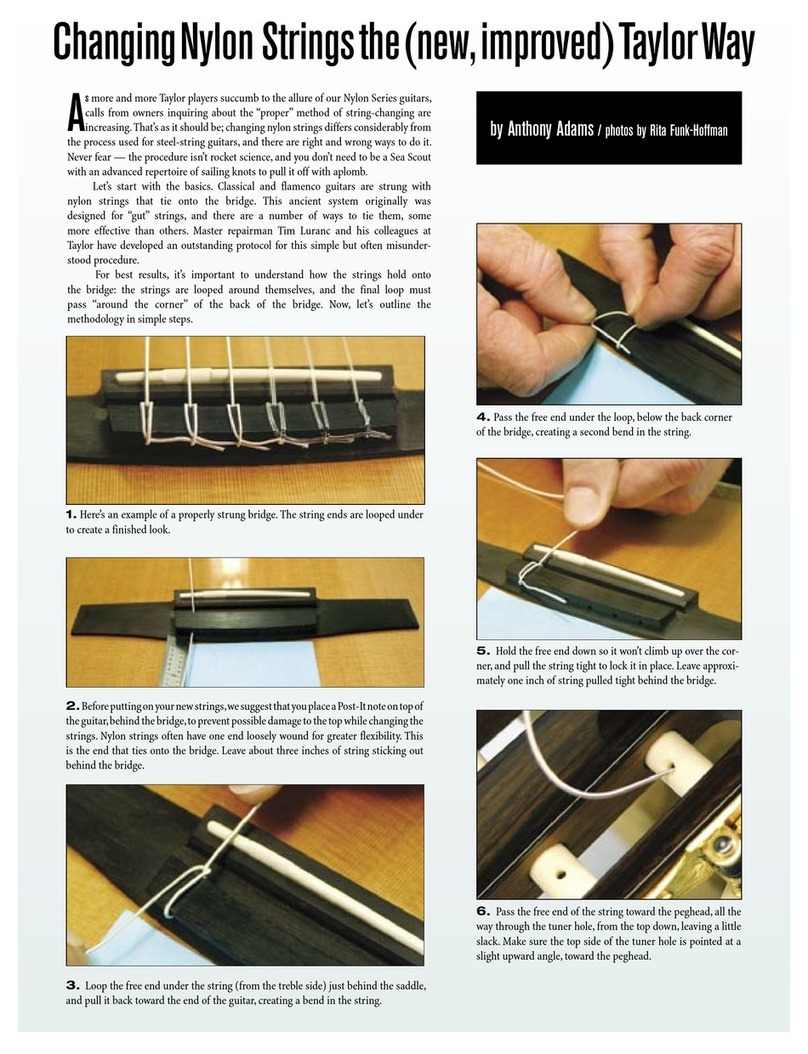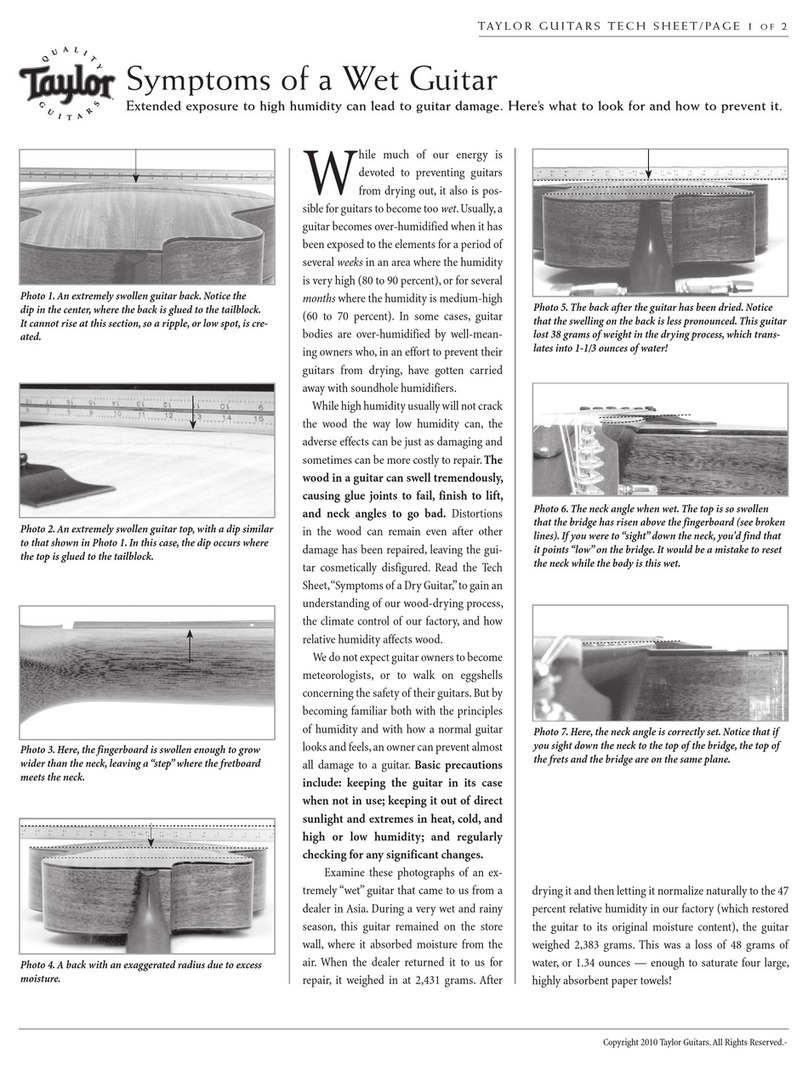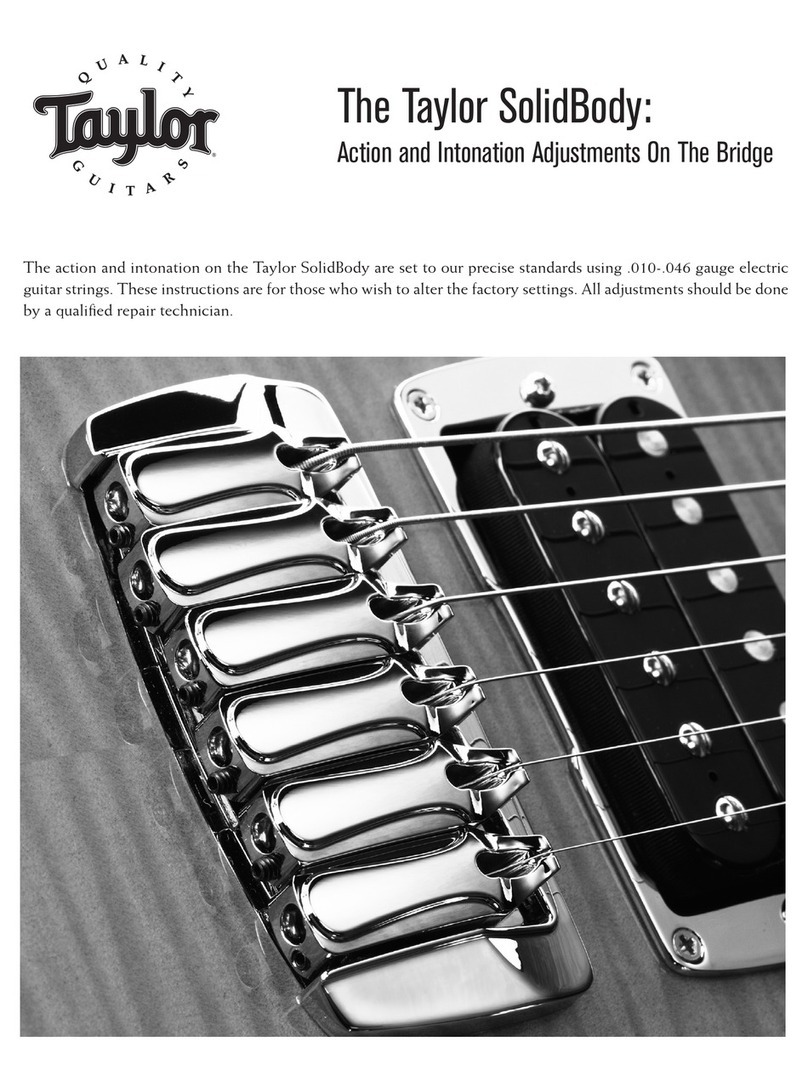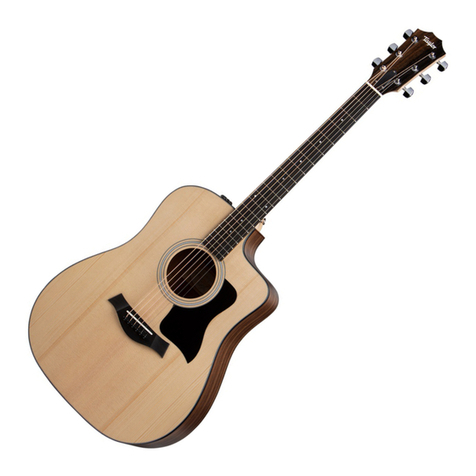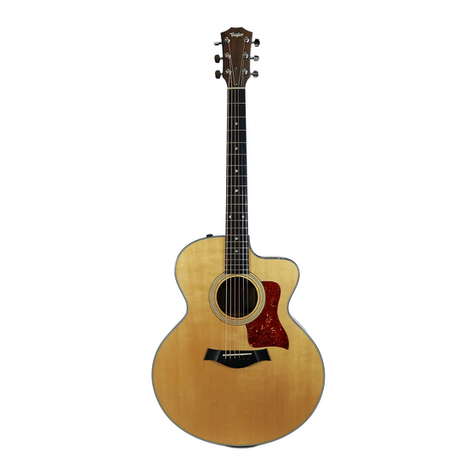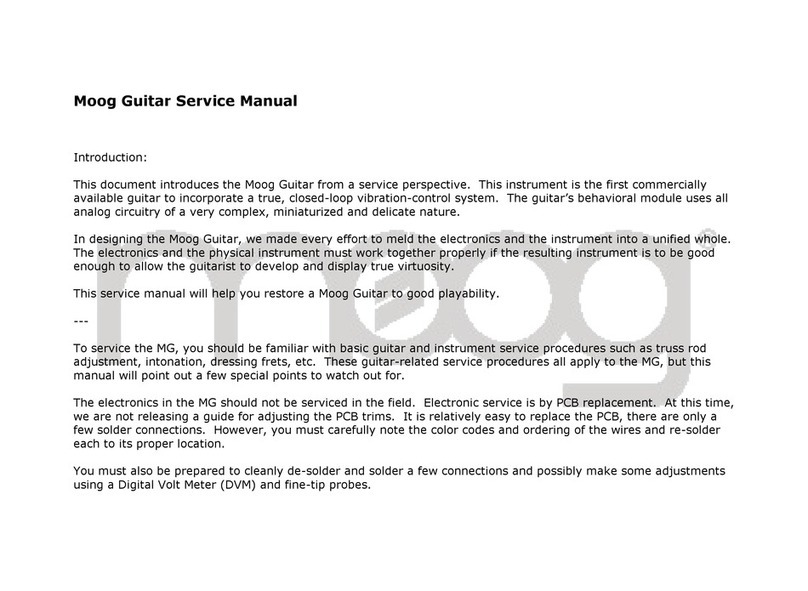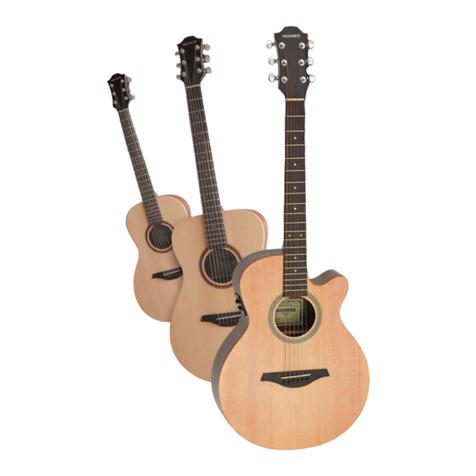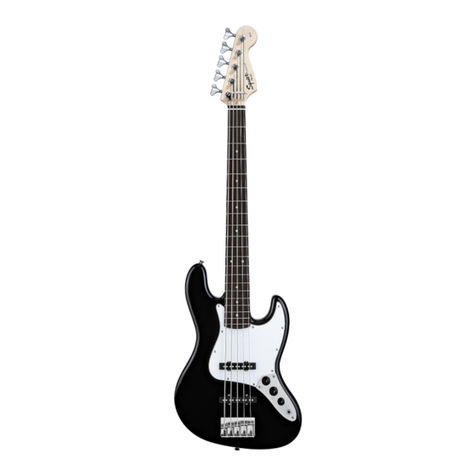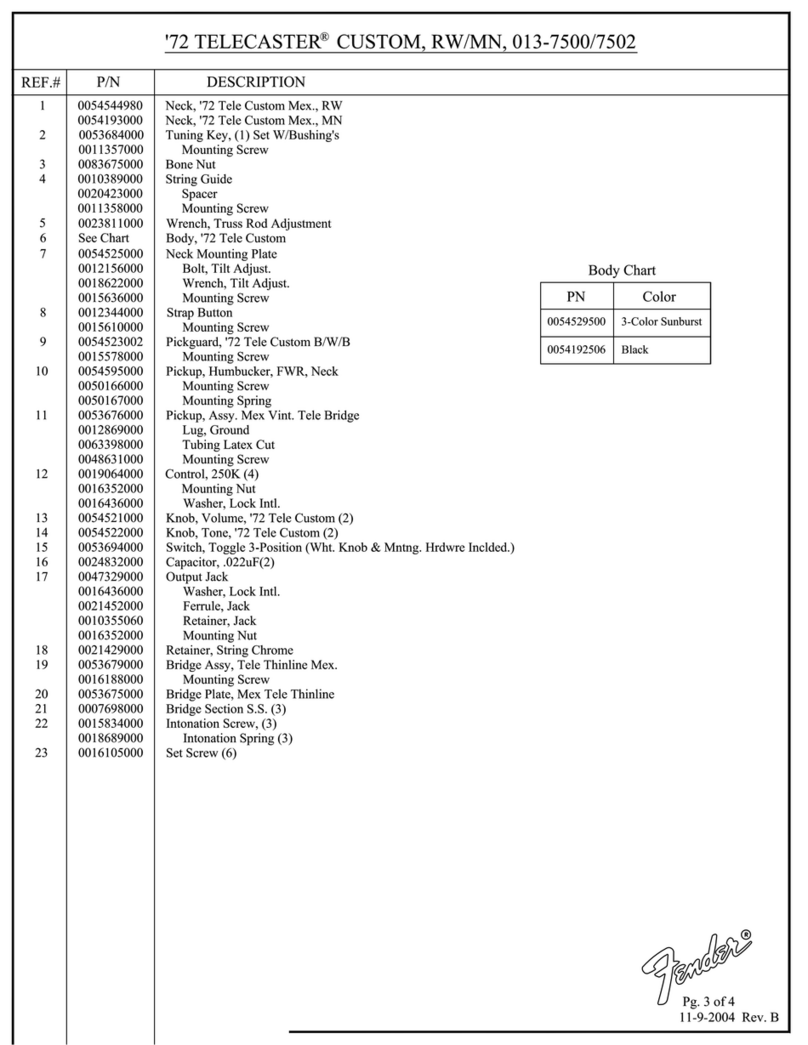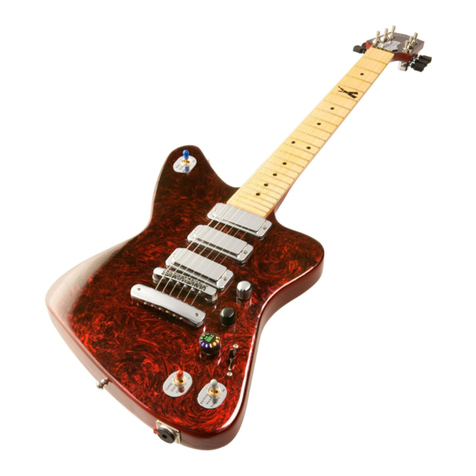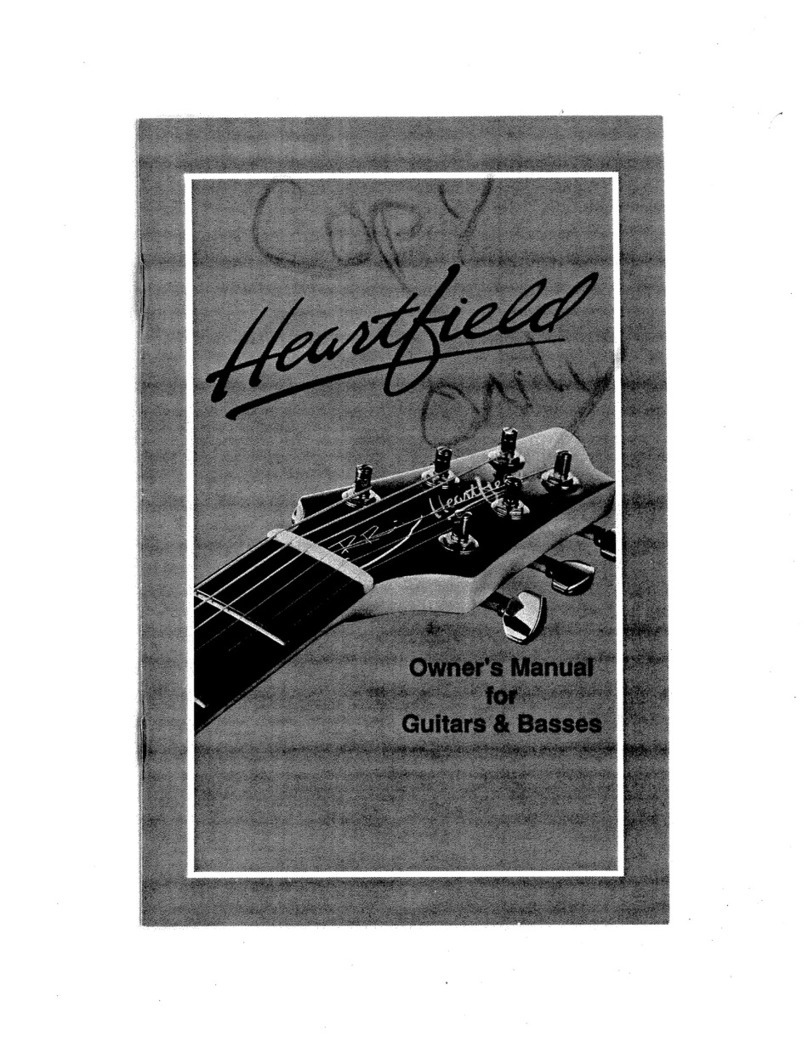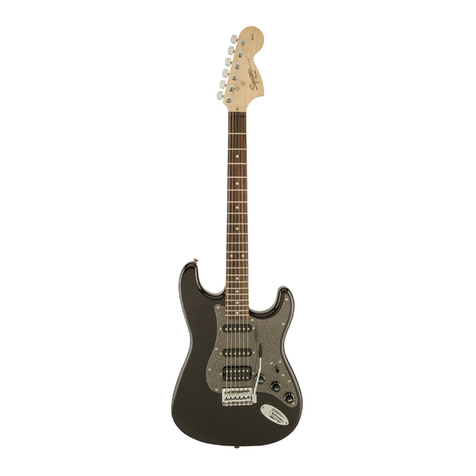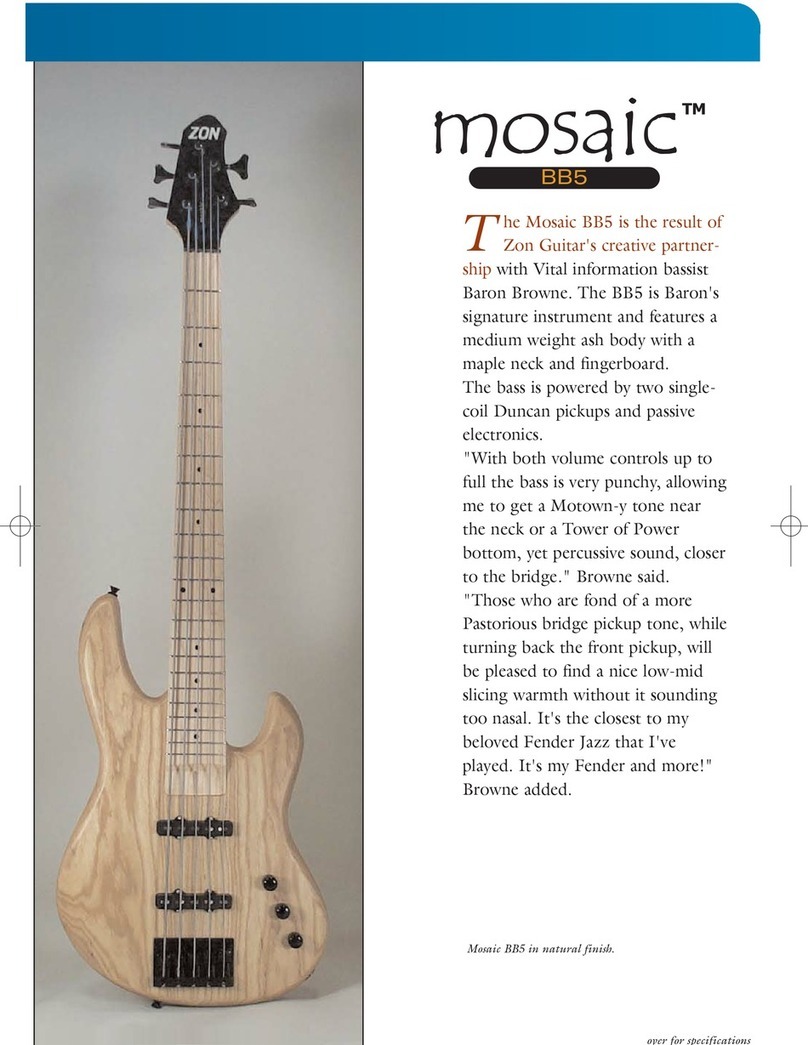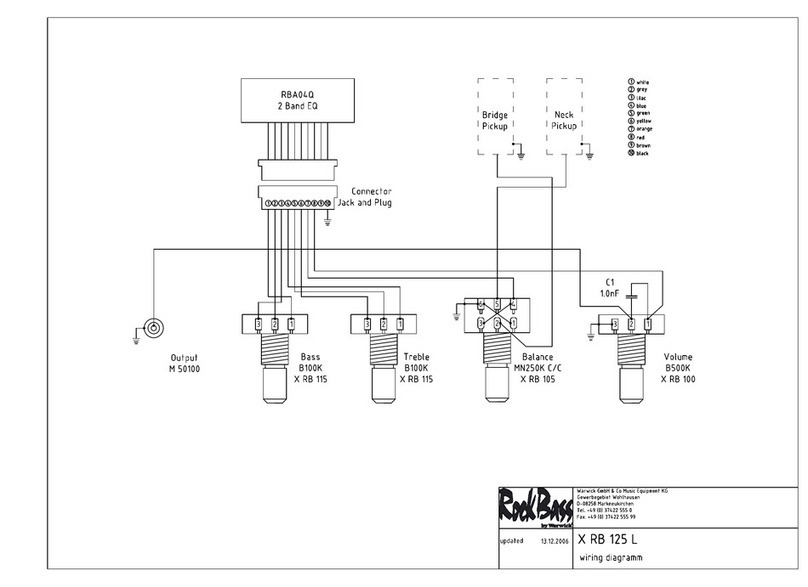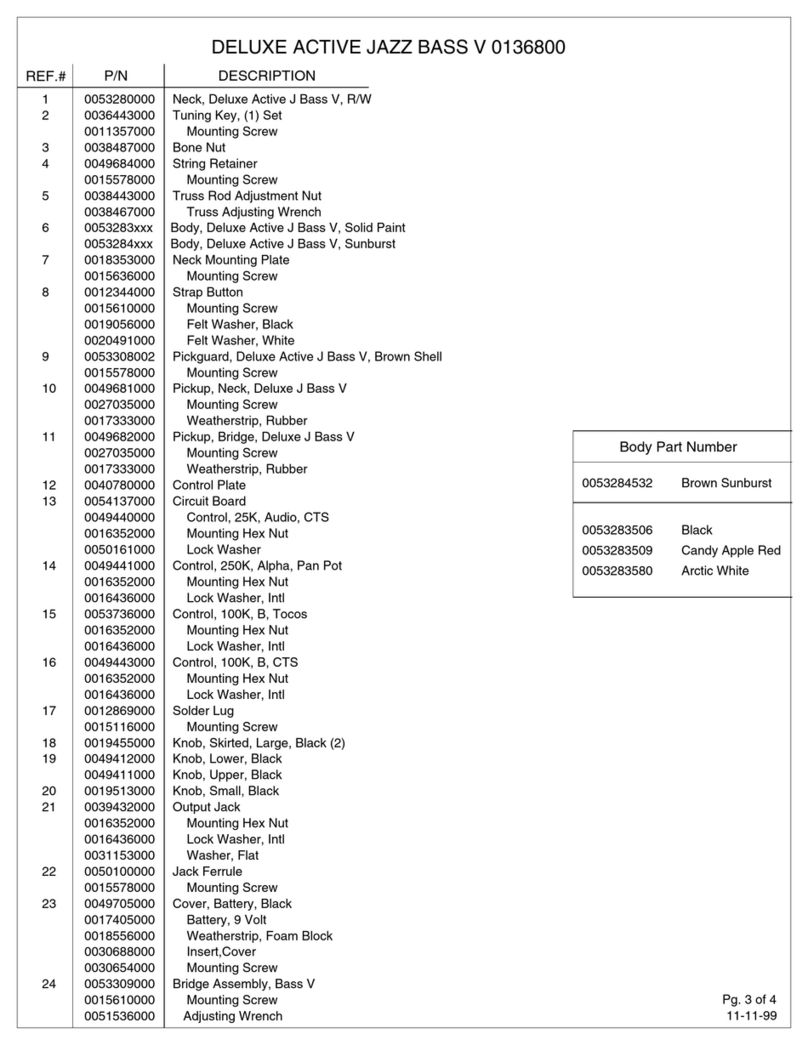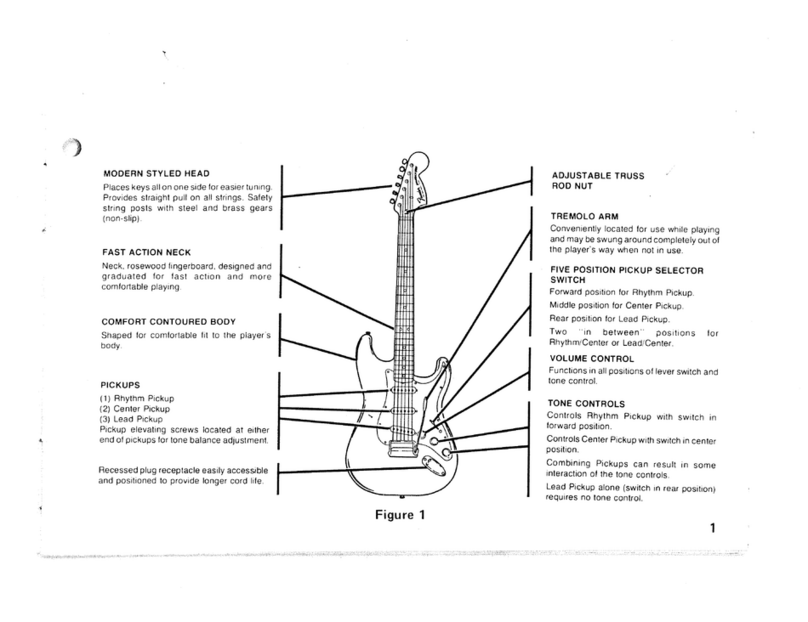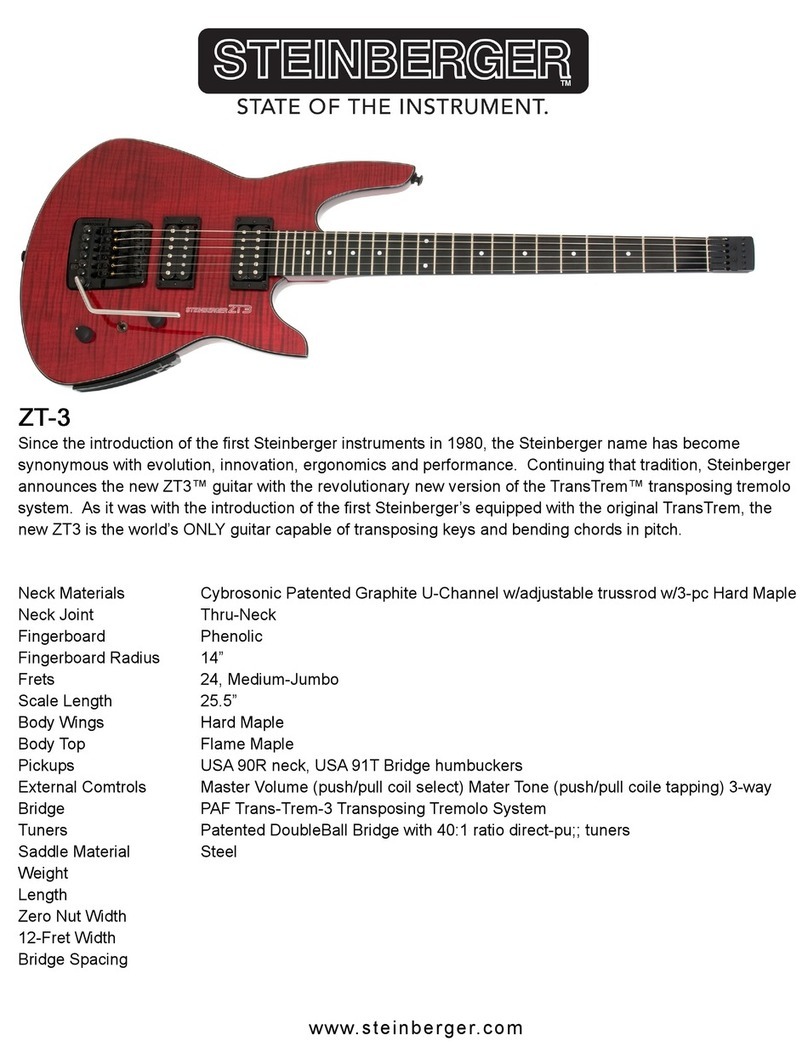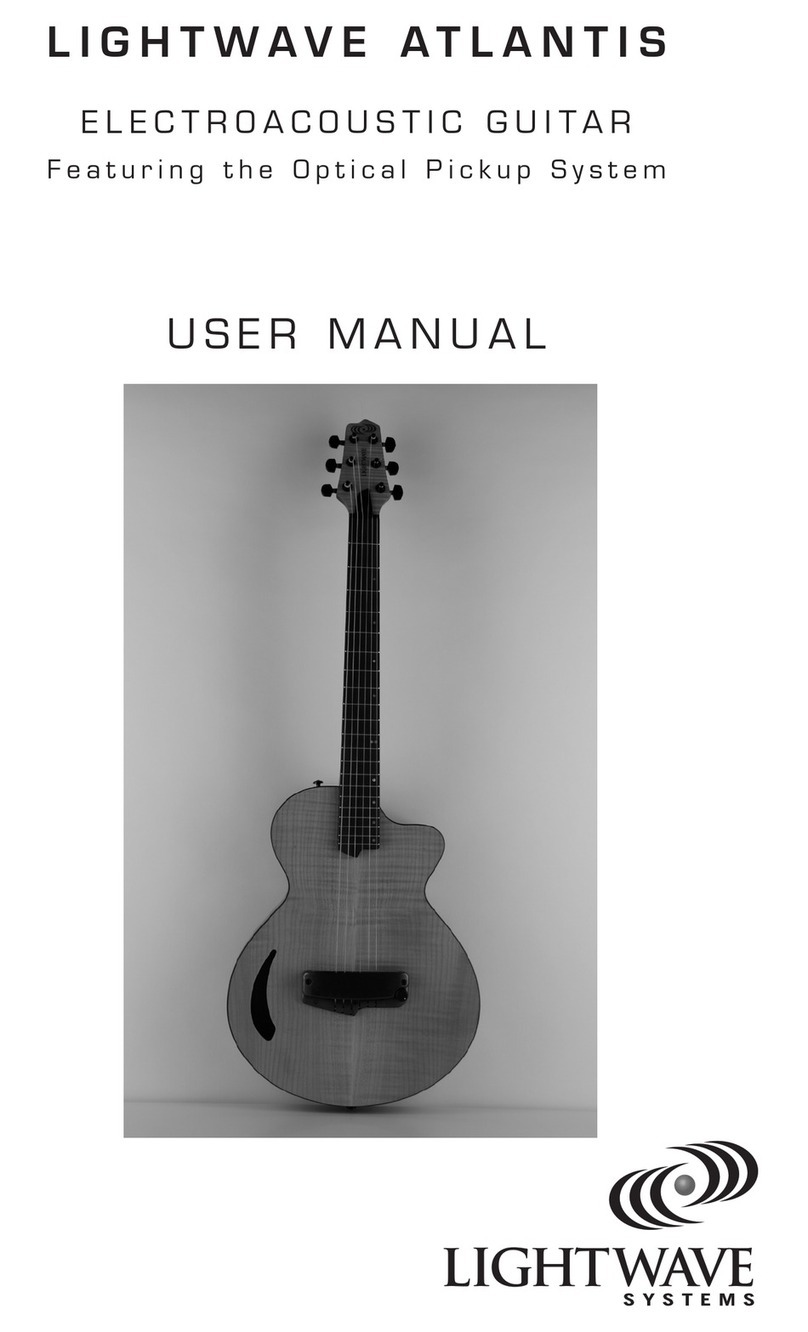TAYLOR TECH SHEET
USING A GUITAR HUMIDIFIER
Quality acoustic guitars are
made from solid wood, and
Taylor guitars are built in a
controlled environment where the rela-
tive humidity is 47 percent. It is essen-
tial to maintain a proper moisture level
to prevent adverse effects such as bad
string action and buzzing, protruding
fret ends, cracking, top-sinking (see
illustration at right), and other damage
to your instrument. As always, your
guitar case provides essential protec-
tion from drying and other environ-
mental effects, but in areas prone to
severe dryness and/or cold, (such as
heated homes), you MUST use a gui-
tar-humidifying device.
There are several stringed-instru-
ment humidifiers on the market that
are specifically designed to maintain or
restore the proper moisture level.
These include the clay-filled type
(about the size of a small film canister);
the vinyl soundhole-cover type; and
the long, “rubber-tube” type, which is
what we recommend and sell.
Of the tube types (Dampit,
Humitron, etc.), we recommend the
larger one, which is approximately one
foot in length and 3/4 of an inch in
diameter (see illustration, right). The
“film canister”-type humidifier releases
moisture in discreet amounts, and only
works well in areas of minimal dryness.
The vinyl soundhole-cover types work
well enough, although they have a ten-
dency to trap the majority of the mois-
ture in the body, not releasing enough
into the case to benefit the neck.
The tube humidifier often comes
with a plastic soundhole cover contain-
ing a humidity gauge. To make this
humidifier more “user-friendly,” discard
the plastic cover and use only the tube
itself. Like most humidifiers,
the tube type is basically an
encased sponge. Hold the
tube under cool tap water
until the sponge inside is sat-
urated. Then, wring out the last
drop of excess water, and dry off
the outside of the tube. This is
important, because water drippings
can damage your instrument.
Suspend the tube inside
the guitar body by wedging
it between the G and D
strings, so that the plastic cap
prevents it from falling into
the guitar (see illustration).
This enables the moisture in
the tube to humidify the
body, the neck, and the case.
HOW OFTEN SHOULD I
RE-WET THE HUMIDIFIER?
That depends on the
season and the region in
which you live. As a general
rule:
• In areas of the country that
are very dry, or where cold
winters are the norm, or
where the relative humidity
consistently remains in the
20 to 35 percent range, re-
wet your humidifier every
five to seven days. [Homes
with wood-burning heaters
frequently have extremely
dry interiors.]
• If your humidity is consis-
tently 20 percent or lower,
which often is the case in
homes with wood-burning
heaters, refer to “A Word to
the Wise.”
1980 GILLESPIE WAY • ELCAJON, CA 92020-1096 • CUSTOMER SERVICE (619) 258-6957 • FAX (619) 258-3797
USING A GUITAR HUMIDIFIER Copyright 1994 Taylor Guitars All Rights Reserved
Dips
Raised
Smooth Arch
Normal
Bridge raises; action high and hard to play
Bridge sinks down; low action causing strings to buzz
Bridge in correct position; action proper
Dry
Wet
